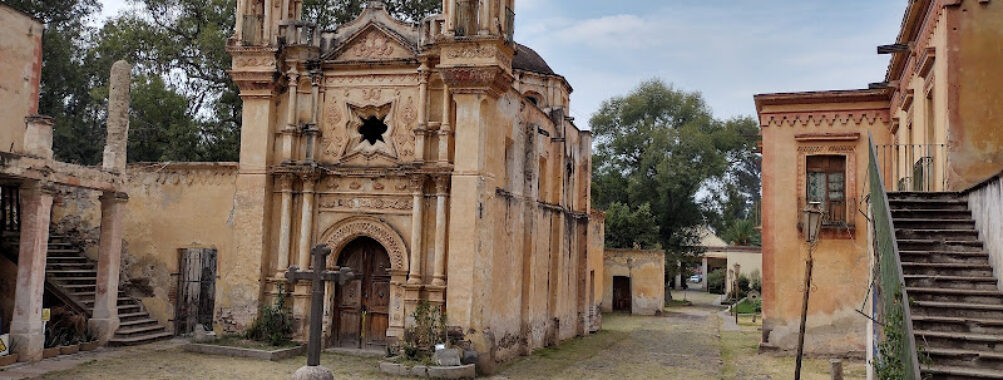
Molino de Flores National Park
Table of Contents
Description
Molino de Flores National Park in Texcoco isn’t just a pretty patch of green with a few benches – it’s a place where history, architecture, and everyday life in Mexico have been colliding for centuries. Once a grand hacienda built by the Marquises of Salvatierra during the colonial era, it later found new life in 1937 when President Lázaro Cárdenas decided it should belong to the people. Today, it’s under the care of the National Commission of Natural Protected Areas, and you can still feel that mix of grandeur and accessibility when you wander through its gates.
Walking into the park feels a bit like stepping back in time. The old stone walls, the San Joaquín Church, and the Chapel of Señor de la Presa still stand, weathered but proud. You can almost imagine the clatter of horse hooves on cobblestones or the murmur of workers tending pulque production centuries ago. And yet, it’s not all about history – there’s a lively, everyday charm here. Families spread out blankets for picnics, kids run between swings and playgrounds, and the smell of carne asada drifts from barbecue grills. It’s a place where you can learn and relax in the same afternoon.
Of course, like any well-loved public space, it has its quirks. Some corners could use a bit more maintenance, and on busy weekends, the crowds can be a little overwhelming. But there’s a certain warmth to it all – a feeling that this is a park made for people, not just for postcards. If you’re the kind of traveler who likes your history with a side of real life, Molino de Flores delivers exactly that.
Key Features
- Historic colonial-era architecture, including the main hacienda house, San Joaquín Church, and the Chapel of Señor de la Presa
- Guided tours available at no extra cost, offering local stories and historical insights
- Expansive green areas perfect for picnics and family gatherings
- Barbecue grills, picnic tables, and shaded spots for a leisurely afternoon
- Kid-friendly amenities like swings, playgrounds, and easy walking trails
- Wheelchair-accessible entrances and parking
- Dog-friendly policies, so pets can join the outing
- Opportunities to spot local flora and fauna
- Hiking trails for light to moderate exploration
Best Time to Visit
If you’re hoping for a quieter experience, weekdays are your best bet. The park gets especially lively on weekends and public holidays when families from Texcoco and nearby towns pour in for picnics and celebrations. Spring (March to May) offers warm weather and blooming flowers, making the gardens and surrounding countryside particularly photogenic. The rainy season, from June to September, paints everything a lush green, but you’ll want to pack a light rain jacket – showers can roll in without much warning. Winter months are cooler and less crowded, though the mornings can be a bit chilly, so layer up if you’re an early riser.
Personally, I love visiting in late afternoon no matter the season. The sun hits the old stone buildings just right, casting long shadows and giving the whole place a golden glow. Plus, by then the midday rush has usually thinned out, and you can find a quiet bench to just sit and watch the light change.
How to Get There
Getting to Molino de Flores National Park is fairly straightforward if you’re already in the State of Mexico. From Texcoco’s center, it’s just a short drive – about 10 to 15 minutes – along the road toward San Miguel Tlaixpan. Public transport options are available, though they can be slower and less direct. Small colectivos (shared vans) run from Texcoco to nearby stops, from which it’s a brief walk to the entrance. If you’re coming from Mexico City, plan for about an hour to an hour and a half by car, depending on traffic. And yes, traffic can be unpredictable, especially on weekends.
For those who prefer not to drive, some local tour operators offer day trips that combine Molino de Flores with other attractions in Texcoco. It’s worth considering if you want to skip the hassle of navigation and parking.
Tips for Visiting
First and foremost, bring cash. While entry to the park itself is free, you might want to buy snacks, drinks, or souvenirs from local vendors, and not all of them take cards. If you plan to barbecue, arrive early to claim a grill – they’re popular, and once they’re gone, they’re gone. The same goes for shaded picnic tables on sunny days.
Wear comfortable shoes. Even if you’re not planning a big hike, the park’s paths are a mix of cobblestone, dirt, and grass, and you’ll likely end up exploring more than you intended. If you’re visiting in the rainy season, waterproof footwear is a smart move. And don’t forget sunscreen – there’s plenty of shade, but also open areas where the sun can be strong.
For families, the playgrounds and open spaces are a huge plus, but keep an eye on little ones near the old buildings, as some steps and edges aren’t as secure as modern standards. Dog owners will be happy to know pets are welcome, but leashes are required, and it’s best to bring your own water bowl for them.
Lastly, take the guided tour if you can. Even if you think you’re just here for the scenery, the stories about the hacienda’s past – from pulque production to local legends – add a whole new layer to the visit. I’ve taken it twice, and each time the guide shared a different detail I hadn’t heard before. It’s one of those small touches that makes Molino de Flores more than just another pretty park.
Location
Places to Stay Near Molino de Flores National Park
Find and Book a Tour
Explore More Travel Guides
No reviews found! Be the first to review!